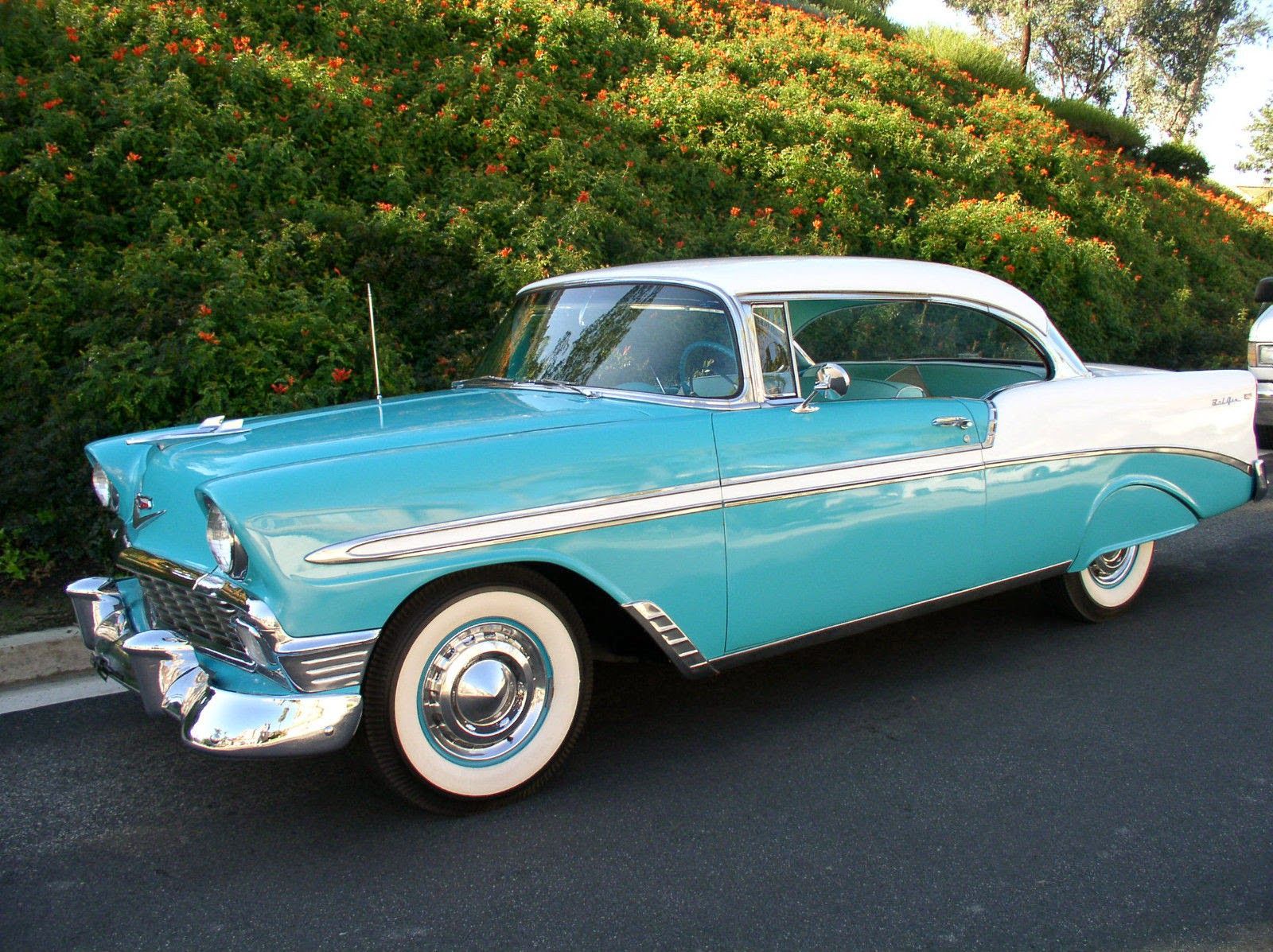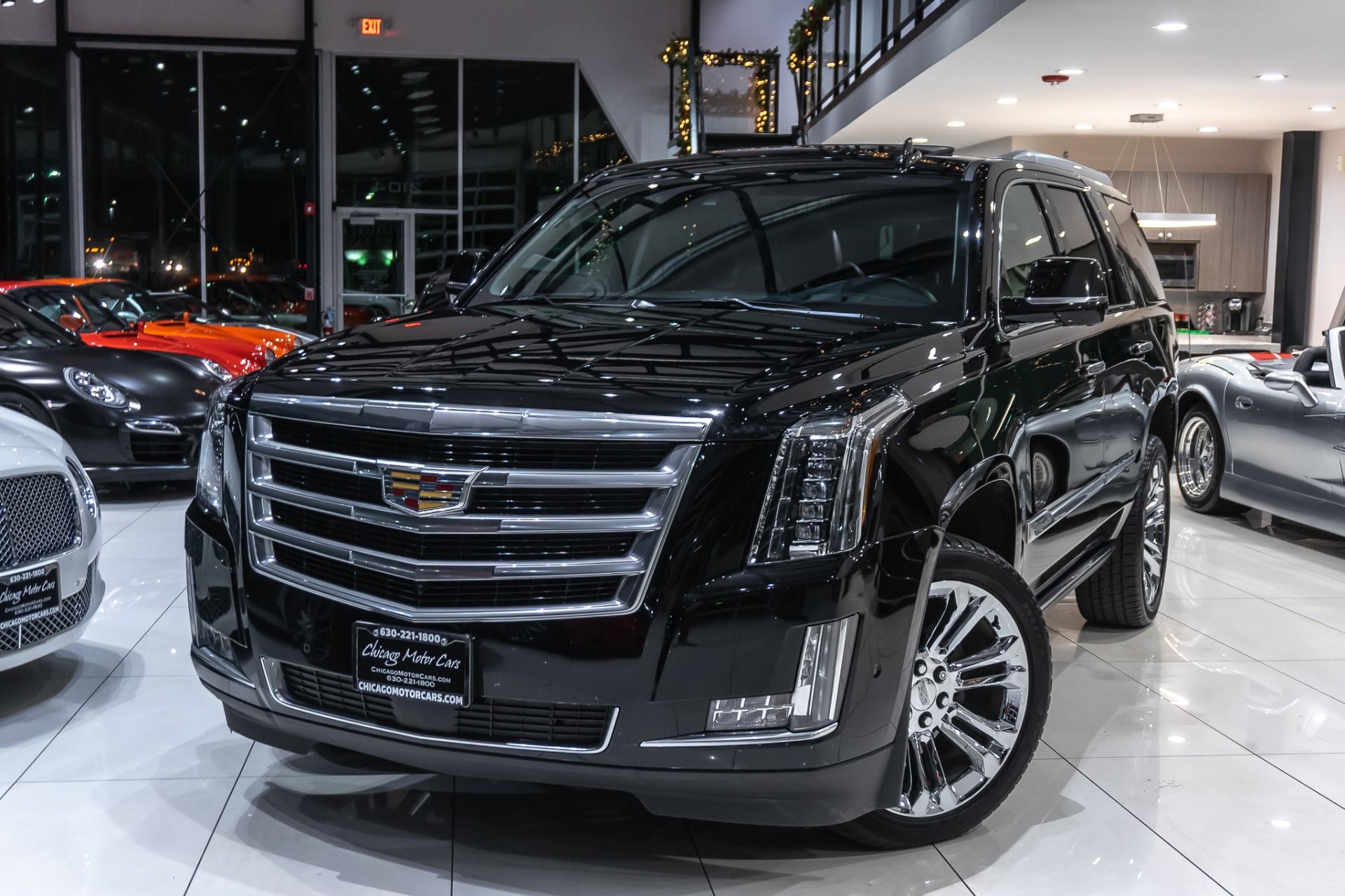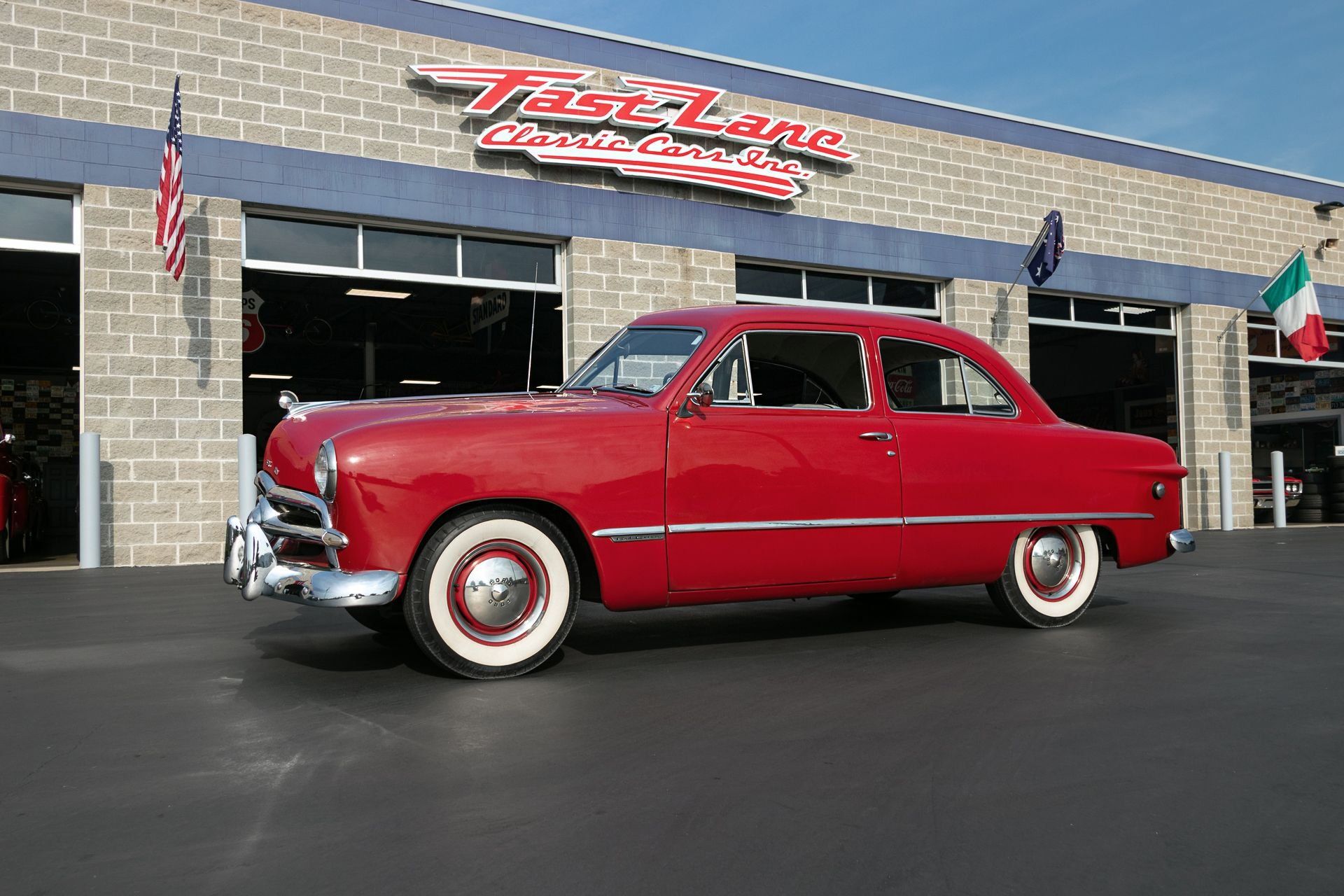
When it comes to the rarefied world of custom car building, Chip Foose is not merely a name; he is an institution. For decades, he has redefined the benchmarks of automotive design and fabrication, consistently demonstrating an unparalleled ability to blend artistic vision with engineering precision. His influence stretches far beyond the custom shop floor, inspiring countless enthusiasts and solidifying his reputation as a legendary figure in the automotive industry.
Foose’s distinctive signature lies in his unwavering commitment to clean lines, perfectly balanced proportions, and a designer’s eye that seamlessly integrates both form and function. Whether he’s crafting a ground-up Ridler-winning show car or orchestrating a wild, week-long transformation on his acclaimed television show, Overhaulin’, his work invariably possesses a level of polish and thoughtful execution that sets it apart. It is this meticulous attention to detail and a profound respect for automotive heritage that makes each Foose creation a true masterpiece.
In this extensive exploration, we delve into the heart of Foose’s remarkable career by spotlighting some of his most iconic builds. These vehicles are more than just custom cars; they are rolling testaments to his genius, showcasing his capacity to envision, innovate, and meticulously bring to life automotive art that is both refined and built to endure. Join us as we journey through the early masterpieces that cemented his legacy, beginning with seven builds that powerfully illustrate the breadth of his creative prowess.

1. **0032 Roadster**The 0032 Roadster stands as a pivotal milestone in Chip Foose’s career, serving as a modern reinterpretation of the quintessential ’32 Ford. This particular build did more than just capture the imagination; it clinched the coveted 2000 America’s Most Beautiful Roadster award, effectively putting Foose’s name firmly on the map for a vast audience of automotive aficionados. It represented a bold statement, bridging the gap between historical reverence and contemporary design.
At its core, the 0032 Roadster was a marvel of bespoke craftsmanship. It featured a meticulously hand-built body, a testament to the artisan’s touch that defines Foose’s approach. This attention to detail extended to the vehicle’s underpinnings, where an independent suspension system was integrated at both the front and rear, promising a ride quality and handling dynamics far superior to its vintage inspiration.
Beneath its stunning exterior, the undercarriage was detailed to an extraordinary degree, looking every bit as impressive as the flawless paintwork above. Powering this modern classic was an LT1 Corvette engine, providing robust and reliable performance. Yet, the true genius of the 0032 Roadster lay not just in its components, but in its perfectly refined proportions—achieving a stance that was lower, tighter, and sleeker than any stock ’32, with every element meticulously smoothed, tucked, and balanced to absolute perfection. It wasn’t merely a hot rod; it was a profound declaration of design philosophy.
Car Model Information: 2024 RAM 1500 Laramie
Name: Chip Foose
Caption: SEMA (association)
BirthName: Douglas Sam Foose
BirthDate: [object Object]
BirthPlace: Santa Barbara, California
Occupation: Automobile designer, television presenter
Children: 2
Website: url
Categories: 1963 births, American automobile designers, Articles with hCards, Articles with short description, Living people
Summary: Douglas Sam “Chip” Foose (born October 13, 1963) is an American automobile designer, artist, and star designer of the car-customization reality television series Overhaulin’.
Get more information about: Chip Foose
Buying a high-performing used car >>>
Brand: Ford Model: 0032 Roadster
Price: $33,477 Mileage: 46,404 mi.
Read more about: The Unvarnished Truth: 15 Cars That Left Owners Fuming With Performance Failures and Reliability Nightmares
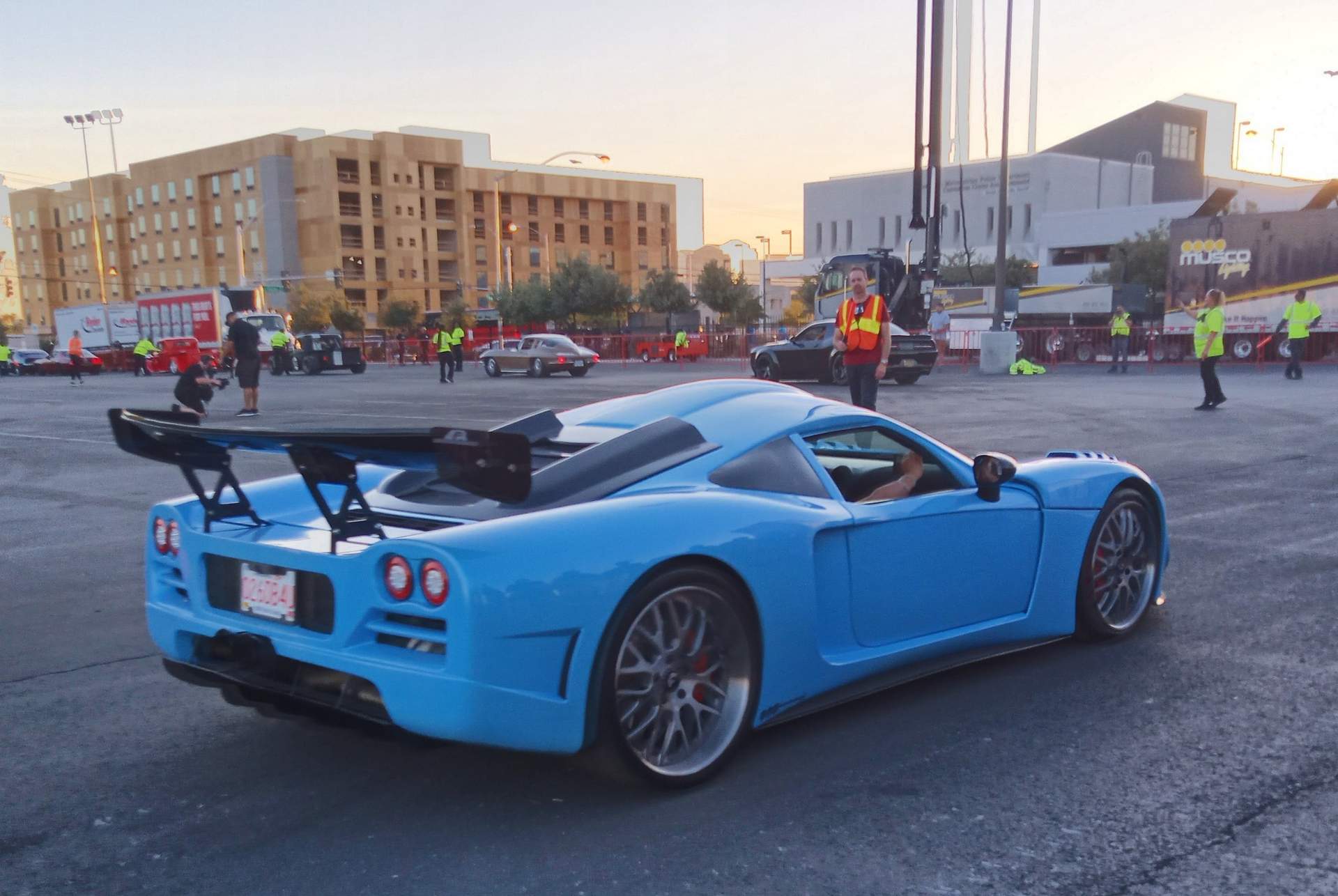
2. **Hemisfear**The Hemisfear began its remarkable journey not as a physical entity, but as a compelling sketch nestled within Chip Foose’s college portfolio. This audacious design eventually transcended the drawing board, evolving into a tangible, limited-production car that garnered significant attention. Its futuristic lines and aggressive stance would later subtly influence iconic designs, notably contributing design cues that inspired the Plymouth Prowler, underscoring Foose’s visionary impact on the industry.
This vehicle was conceived as a mid-engine monster, a testament to its performance-oriented architecture. Power was derived from a formidable HEMI V8 engine, promising exhilarating acceleration and a commanding presence. Furthermore, its construction embraced advanced materials, utilizing carbon fiber to achieve both lightness and structural rigidity, positioning it squarely at the forefront of automotive engineering for its time.
Only a handful of Hemisfear models were ever brought to fruition, rendering each example a rare and handcrafted showcase of American design artistry fused with exotic automotive architecture. It was characterized by its low, wide, and aggressive posture, complemented by a custom billet suspension system that spoke volumes about its performance credentials. Every curve and line received painstaking attention to detail, resulting in a design that was undeniably bold without resorting to overt ostentation—pure Foose from every conceivable angle.

3. **Impression**The Impression represents another crowning achievement in Foose’s illustrious career, a coachbuilt custom that began its life as a 1936 Chevy. This extraordinary creation wasn’t just a show car; it was a dominant force on the automotive circuit, sweeping nearly every major accolade, most notably the highly prestigious Ridler Award in 2005. Its success underscored Foose’s profound ability to transform a classic into an undisputed champion of custom craftsmanship.
Built upon a purpose-designed custom chassis, the Impression integrated modern performance with classic aesthetics. Under the sculpted hood resided an LS1 engine, providing a potent and reliable powertrain befitting a vehicle of its caliber. Complementing this, independent suspension was fitted all around, ensuring a contemporary ride quality and handling precision that elevated the driving experience far beyond its vintage origins.
The sheer extent of customization on the Impression was staggering, with virtually every component built from scratch. This included bespoke fenders, a uniquely reshaped roofline, and an entirely custom interior, each element meticulously crafted to perfection. The finish quality achieved was truly on another level, with an obsessive attention to detail that extended even to the intricately sculpted underhood bracing. This build perfectly exemplified Foose’s enduring genius: taking a familiar automotive silhouette and transforming it into a rolling piece of art, all while painstakingly preserving its original soul and character.
Read more about: A Glimpse into the Gilded Age: 12 Fascinating Snapshots of American Life 150 Years Ago

4. **Boydster II**The Boydster II emerged during a significant period in Chip Foose’s early career, crafted during his tenure with the legendary Boyd Coddington. This iconic roadster skillfully fused traditional classic roadster cues with a decidedly modern stance and impeccably clean surfacing. It quickly became a benchmark for contemporary hot rod design, establishing new aesthetic parameters for the custom automotive world.
The original Boydster II, instantly recognizable in its striking yellow livery, was powered by a reliable Chevy small-block engine. Its advanced engineering for the time included an independent suspension system, providing a refined ride and enhanced handling capabilities. Further demonstrating its cutting-edge design, features such as hidden hinges and extensive use of billet components were integrated throughout the build, highlighting a forward-thinking approach to customization. Notably, this very vehicle would later be reworked by Chip himself, evolving into the celebrated 0032 Roadster.
A defining characteristic of the Boydster II was its remarkably clean aesthetic, achieved through the deliberate absence of visible handles or trim. This design choice created an uninterrupted, smooth sweep from nose to tail, contributing significantly to the “smooth” movement that gained prominence in hot rod building during the late ’90s and early 2000s. Even today, decades after its debut, the Boydster II retains an astonishingly fresh and relevant appearance, precisely what one would expect from a timeless creation originating from Foose’s early design catalog.
Car Model Information: 2024 RAM 1500 Laramie
Name: Chip Foose
Caption: SEMA (association)
BirthName: Douglas Sam Foose
BirthDate: [object Object]
BirthPlace: Santa Barbara, California
Occupation: Automobile designer, television presenter
Children: 2
Website: url
Categories: 1963 births, American automobile designers, Articles with hCards, Articles with short description, Living people
Summary: Douglas Sam “Chip” Foose (born October 13, 1963) is an American automobile designer, artist, and star designer of the car-customization reality television series Overhaulin’.
Get more information about: Chip Foose
Buying a high-performing used car >>>
Brand: Boydster Model: Boydster II
Price: $33,477 Mileage: 46,404 mi.
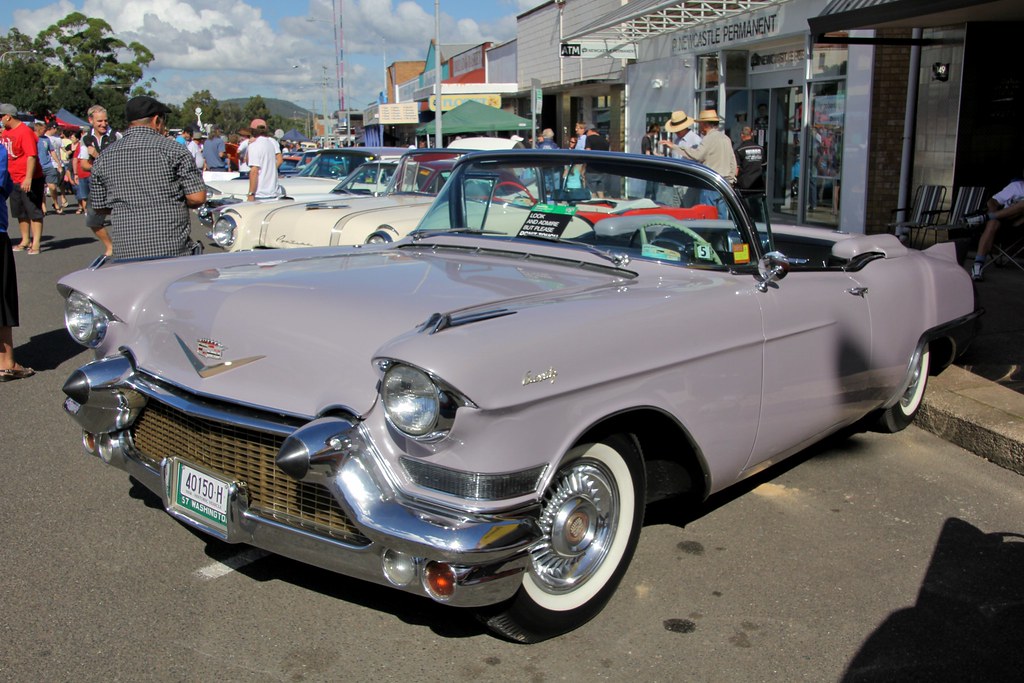
5. **Eldorod**The Eldorod stands as a remarkable testament to Chip Foose’s transformative abilities, originally conceived and brought to life on the popular television series Overhaulin’. This particular project involved a masterful reimagining of a 1948 Cadillac Eldorado, taking a full-size cruiser that epitomized post-war American luxury and converting it into a radically chopped, slammed, and exquisitely sculpted street machine that exuded an undeniable, serious presence.
Foose’s genius with the Eldorod lay in his ability to drastically alter its form while meticulously preserving its intrinsic Cadillac identity. He artfully shed the vehicle’s original bulk, implementing a series of precise modifications that reshaped its silhouette. The roofline was skillfully chopped, the body extensively smoothed, and the bumpers were expertly tucked, all contributing to a more aerodynamic and aggressive profile. The final finish imbued the car with a subtle yet potent stance, signaling both elegance and power.
Underneath its redesigned exterior, the Eldorod was more than just a visual statement. It was powered by a robust Chevy big block V8, ensuring that its performance capabilities matched its striking aesthetics. This build unequivocally demonstrated Foose’s prowess in transforming even the most substantial of classic vehicles—often referred to as “land yachts”—into something sharp, dynamic, and utterly captivating, proving that bold vision paired with meticulous execution can breathe new life into any automotive icon.
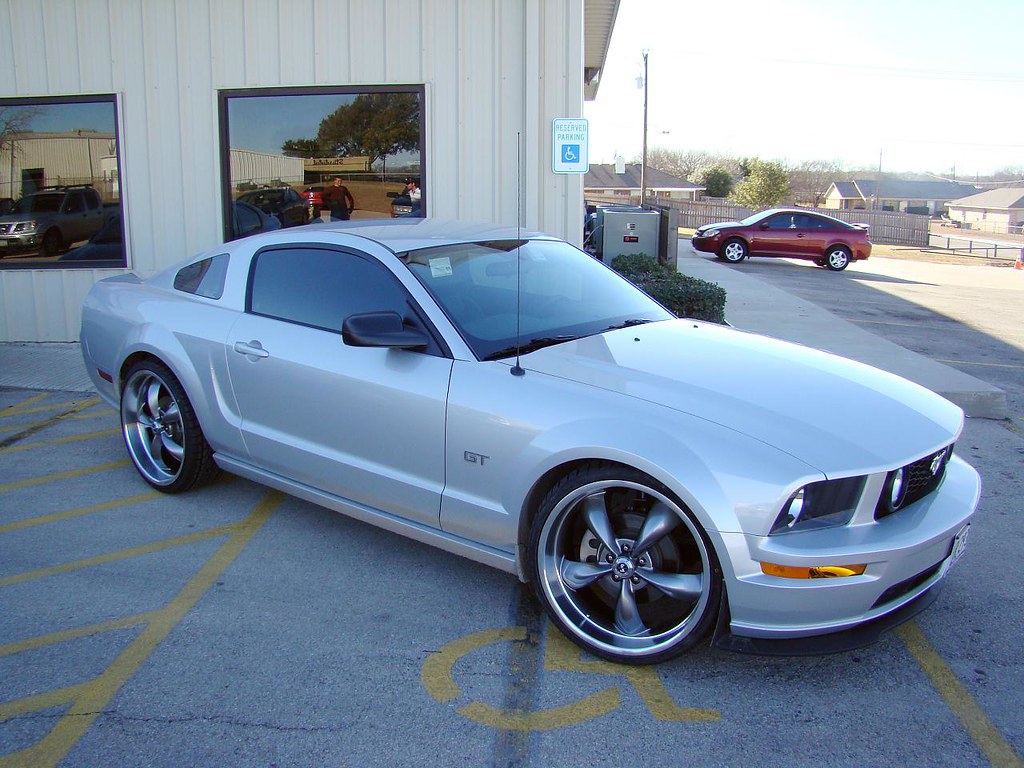
6. **Stallion Mustang**The Stallion was introduced as a compelling 2006 Ford Mustang concept, the culmination of a dynamic partnership between Chip Foose and Ford, unveiled to great acclaim at SEMA. Foose approached this project with a clear objective: to refine and enhance the factory body lines, making them tighter and more aggressive without veering into the realm of exaggeration or over-the-top styling. His philosophy was to elevate, not overpower, the original design.
The changes implemented were characterized by their subtlety, yet their collective impact was profound. Foose meticulously reshaped the bumpers, integrated a custom grille, and finessed the car’s overall profile, resulting in a noticeably sharper and more cohesive aesthetic. This particular build brilliantly showcased Foose’s distinctive knack for what is often termed “OEM+” styling—the art of transforming a production vehicle into something truly special and personalized, while diligently retaining its inherent factory character and ensuring it remained entirely street-friendly.
Performance was, naturally, a key component of the Stallion Mustang’s appeal. Under the hood, it housed a supercharged 4.6L V8 engine, capable of pushing out in excess of 400 horsepower, delivering exhilarating power that matched its refined looks. The car rode on custom-designed Foose wheels and boasted a lowered stance, complemented by an upgraded suspension system, all contributing to enhanced handling dynamics and an unmistakable visual presence that underscored its dual nature as both a showstopper and a serious performer.
Car Model Information: 2008 Ford Mustang GT Premium
Name: Ford Mustang
Caption: 2018 Ford Mustang GT 5.0
Aka: Ford T5 (Germany)
Manufacturer: Ford Motor Company
Production: March 1964 – present
ModelYears: 1965–present
Class: Unbulleted list
BodyStyle: Unbulleted list
Layout: Front-engine, rear-wheel-drive layout
Categories: 1970s cars, 1980s cars, 1990s cars, 2+2 coupés, 2000s cars
Summary: The Ford Mustang is an American automobile manufactured and marketed by Ford since 1964, as Ford’s longest nameplate in continuous production. Currently in its seventh generation, it is the fifth-best selling Ford car nameplate. The namesake of the “pony car” automobile segment, the Mustang was developed as a highly styled line of sporty coupes and convertibles derived from existing model lines, initially distinguished by its pronounced “long hood, short deck” proportions.
Originally predicted to sell 100,000 vehicles yearly, the 1965 Mustang became the most successful vehicle launch since the 1927 Model A. Introduced on April 17, 1964 (16 days after the Plymouth Barracuda), over 400,000 units were sold in its first year; the one-millionth Mustang was sold within two years of its launch. In August 2018, Ford produced the 10-millionth Mustang; matching the first 1965 Mustang, the vehicle was a 2019 Wimbledon White convertible with a V8 engine.
The success of the Mustang launch led to multiple competitors from other American manufacturers, including the Chevrolet Camaro and Pontiac Firebird (1967), AMC Javelin (1968), and Dodge Challenger (1970). It also competed with the Plymouth Barracuda, which was launched around the same time. The Mustang also had an effect on designs of coupes worldwide, leading to the marketing of the Toyota Celica and Ford Capri in the United States (the latter, by Lincoln-Mercury). The Mercury Cougar was launched in 1967 as a unique-bodied higher-trim alternative to the Mustang; during the 1970s, it included more features and was marketed as a personal luxury car.
From 1965 until 2004, the Mustang shared chassis commonality with other Ford model lines, staying rear-wheel-drive throughout its production. From 1965 to 1973, the Mustang was derived from the 1960 Ford Falcon compact. From 1974 until 1978, the Mustang (denoted Mustang II) was a longer-wheelbase version of the Ford Pinto. From 1979 until 2004, the Mustang shared its Fox platform chassis with 14 other Ford vehicles (becoming the final one to use the Fox architecture). Since 2005, Ford has produced two generations of the Mustang, each using a distinct platform unique to the model line.
Through its production, multiple nameplates have been associated with the Ford Mustang series, including GT, Mach 1, Boss 302/429, Cobra (separate from Shelby Cobra), and Bullitt, along with “5.0” fender badging (denoting 4.9 L OHV or 5.0 L DOHC V8 engines).
Get more information about: Ford Mustang
Buying a high-performing used car >>>
Brand: Ford Model: Mustang
Price: $16,785 Mileage: 81,832 mi.
Read more about: Unlocking Automotive Dreams: 13 Manual Transmission Sports Cars from the 2000s That Are Now Unbelievable Bargains for Enthusiasts
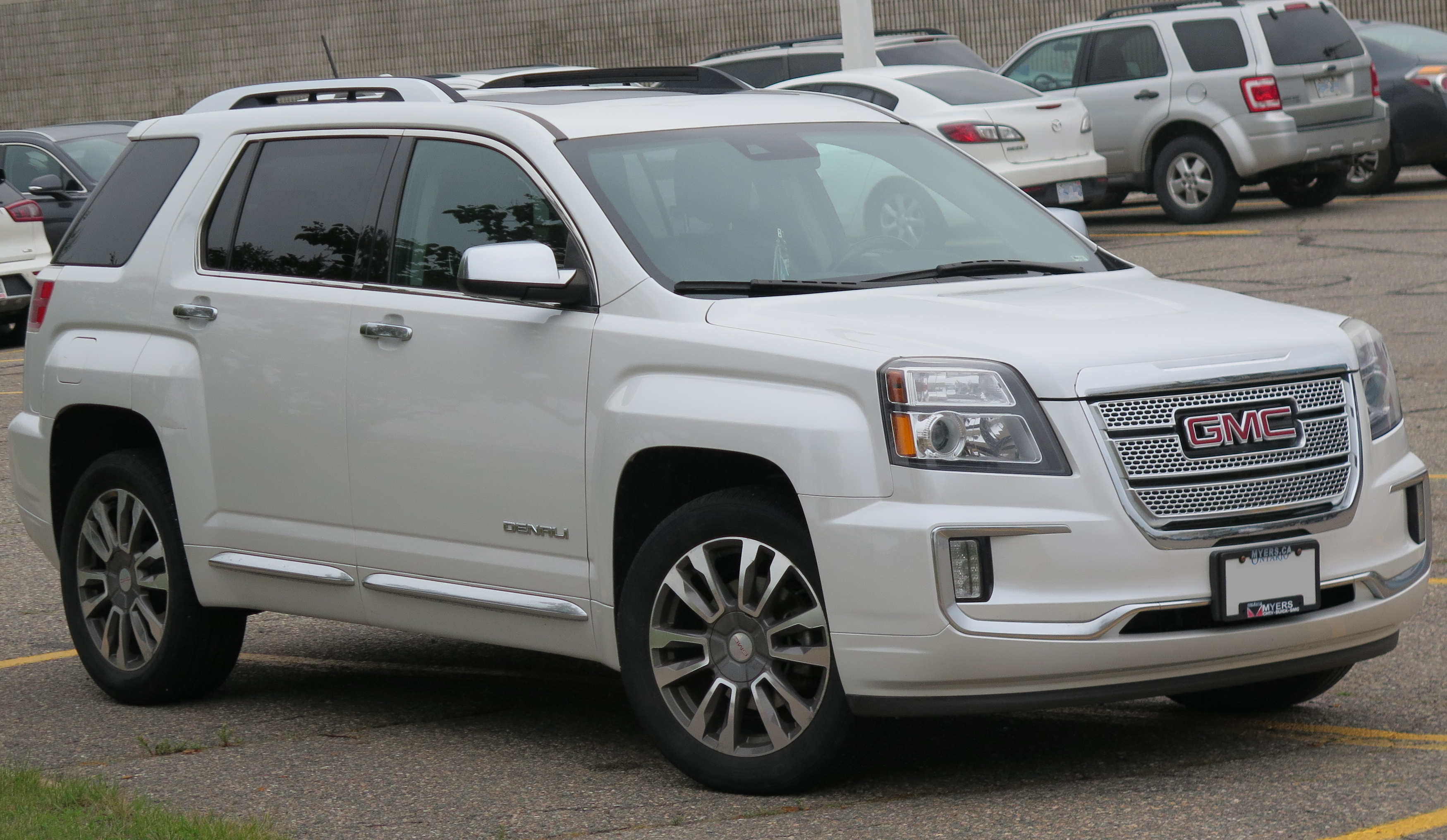
7. **Terracuda**The Terracuda stands as a powerful testament to Chip Foose’s boundless creative range, emerging as a truly unique one-off 1970 Plymouth Barracuda designed for SEMA. What made this build particularly audacious was its unexpected off-road twist, a daring fusion that combined the raw muscle car aesthetics of the iconic ’Cuda with robust, purpose-built off-road hardware. It was an exercise in stylistic juxtaposition that few could execute with such precision.
At the heart of this unconventional creation lay serious engineering. The Terracuda featured a robust tube chassis, providing the structural integrity required for extreme conditions, coupled with a long-travel suspension system designed to absorb the most punishing terrain. Massive tires completed the package, signaling its readiness for adventure far beyond the paved road. Remarkably, the body skillfully retained the ’Cuda’s unmistakable fastback lines, creating a visual dialogue between its classic muscle car heritage and its newfound rugged capability.
Powering this wild fusion was a potent 6.4L HEMI V8 engine, ensuring that its performance was as formidable as its appearance. Finished in a distinctive palette of earth tones, the Terracuda was an extraordinary blend of seemingly disparate styles that, against all odds, worked harmoniously. This groundbreaking build emphatically demonstrated Foose’s willingness to step boldly outside the conventional street rod world, proving his ability to still turn heads and captivate audiences with something utterly unexpected and brilliantly executed.
Having explored the foundational builds that propelled Chip Foose into the automotive stratosphere, we now turn our attention to additional masterworks and a privileged glimpse into his personal garage. These next creations further cement his reputation for evolving excellence, demonstrating his continuous push against conventional boundaries. They underscore a diverse automotive passion, showcasing that whether he’s crafting a one-off showstopper or curating his own collection, every vehicle bears the indelible mark of a true artist and enthusiast.
This deep dive reveals not just the vehicles themselves, but the philosophies and emotions behind them, from heartfelt tributes to daring innovations. Foose’s approach isn’t merely about aesthetics; it’s about a holistic automotive experience where every nut, bolt, and curve tells a story of dedication and unparalleled skill.

8. **1956 Ford F-100 “FD-100”**Among Chip Foose’s extensive portfolio, the FD-100 holds a singularly special place, distinguishing itself as one of his most deeply personal and sentimentally charged projects. Crafted as a heartfelt tribute to his father, Sam Foose, this custom build began its life as a classic 1956 Ford F-100. It wasn’t just another restoration; it was a complete reimagining from the ground up, infused with a profound sense of familial connection and a shared passion for automotive artistry.
The transformation of the FD-100 was exhaustive, beginning with a meticulously smoothed body that erased years of wear and tear, replacing them with Foose’s signature flawless finish. Every panel was finessed, and a custom bed was fabricated, creating a seamless and integrated appearance that deviated significantly from the original utilitarian design. The truck’s posture was dramatically altered, adopting a slammed stance that perfectly complemented the massive custom wheels, giving it an undeniable presence that blended classic truck aesthetics with contemporary hot rod aggression.
Beneath the stunning exterior, the FD-100 housed a formidable Roush Aluminum Sideoiler engine, a powerplant chosen not just for its performance credentials but also for its classic appeal, harking back to a golden era of American V8s. The interior received an equally lavish treatment, featuring hand-stitched leather that exuded luxury and bespoke comfort, accented by finely brushed metal trim. This build was an absolute showcase of meticulous craftsmanship, with details so precise that even the door hinges were custom machined, underscoring an almost obsessive attention to perfection.
The FD-100 is widely regarded as one of the cleanest F-100s ever conceived and built, a masterful fusion of style, sentiment, and engineering excellence. It stands as a powerful testament to Chip Foose’s ability to not only create automotive art but also to imbue it with personal meaning, solidifying its status as an iconic build that beautifully captures the essence of a father-son legacy.
Car Model Information: 1969 Ford F100 Base
Name: Ford F-Series
Caption: 2022 Ford F-150 Lariat Luxury
Manufacturer: Ford Motor Company
Aka: Ford Lobo (Mexico, 1992–present)
Production: 1948–present
Class: Pickup truck#Full-size pickup truck
Layout: Front-engine, rear-wheel-drive layout,rear-wheel drive
Predecessor: 1941 Ford
Categories: All-wheel-drive vehicles, All Wikipedia articles written in American English, All articles that may contain original research, All articles with unsourced statements, Articles that may contain original research from September 2020
Summary: The Ford F-Series is a series of light-duty trucks marketed and manufactured by the Ford Motor Company since model year 1948 as a range of full-sized pickup trucks — positioned between Ford’s Ranger and Super Duty pickup trucks. Alongside the F-150 (introduced in 1975), the F-Series also includes the Super Duty series (introduced in 1999), which includes the heavier-duty F-250 through F-450 pickups, F-450/F-550 chassis cabs, and F-600/F-650/F-750 Class 6–8 commercial trucks.
Get more information about: Ford F-Series
Buying a high-performing used car >>>
Brand: Ford Model: F-100
Price: $59,999 Mileage: 5,246 mi.

9. **1965 Chevy Impala “Imposter”**Chip Foose’s “Imposter” is a groundbreaking custom creation that stands as a true masterclass in the delicate art of blending disparate eras of automotive design. This audacious project dared to merge the timeless, graceful lines of a heavily modified 1965 Impala body with the thoroughly modern, high-performance underpinnings of a 2009 Corvette chassis. The challenge was immense: to adapt a classic body onto a contemporary platform without losing its cherished vintage character, a feat Foose executed with breathtaking precision.
To achieve this seamless integration, the Impala body underwent extensive modifications. It was meticulously shortened and narrowed, with its iconic panels and contours reshaped to perfectly conform to the dimensions and proportions of the donor Corvette chassis. This intricate process required an extraordinary level of skill and vision, ensuring that while the car gained modern performance, it retained the instantly recognizable silhouette and elegant stance of a classic ’65 Impala. The result is a vehicle that, at first glance, appears to be a perfectly restored vintage car, only to reveal its contemporary soul upon closer inspection.
Powering the Imposter is a potent 6.2L LS3 V8 engine, directly inherited from the Corvette, delivering robust and reliable performance that utterly transforms the driving experience. This modern powerplant is expertly paired with a six-speed automatic transmission, providing both exhilarating acceleration and smooth, effortless cruising capabilities. The custom interior further exemplifies Foose’s genius, artfully combining classic Impala cues with modern comfort and technology. Reworked gauges offer a nostalgic nod, while luxurious stitched leather surfaces elevate the cabin to a contemporary luxury standard.
The Imposter’s exceptional build quality and profound technical execution earned it the coveted 2015 Ridler Award, one of the custom car world’s most prestigious accolades. This award not only recognized the sheer complexity and artistry involved but also celebrated Foose’s daring vision to redefine what’s possible when classic aesthetics meet cutting-edge engineering. It remains a shining example of his ability to create vehicles that are both visually stunning and technically superior, blurring the lines between past and present.
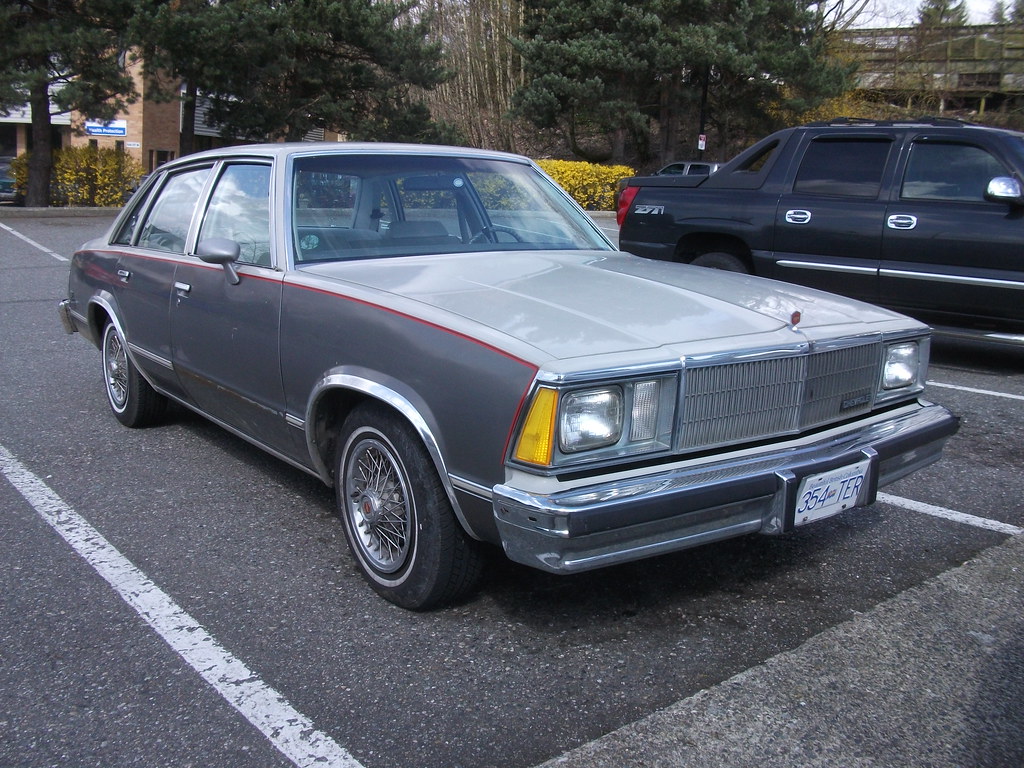
10. **1935 Chevrolet “Grandmaster”**The Grandmaster, a profound demonstration of Chip Foose’s unyielding commitment to excellence, made its indelible mark at the 2002 Detroit Autorama. This remarkable creation not only secured the highly esteemed Ridler Award but also emphatically solidified Foose’s burgeoning reputation for executing next-level craftsmanship and visionary design in the custom automotive sphere. What began as a humble 1935 Chevy Master two-door sedan was utterly transformed, undergoing a complete reimagining into an automotive masterpiece.
The metamorphosis of the Grandmaster involved a painstaking process of hand-fabrication, where nearly every aspect of the original vehicle was either refined or rebuilt from scratch. Foose’s design philosophy for this build focused on achieving flawless proportions and a seamless, organic flow throughout the entire car. There were no harsh edges or clashing lines; instead, every curve and panel was meticulously sculpted to create a harmonious visual symphony, a testament to his profound understanding of automotive aesthetics and industrial design.
At the heart of this custom creation lay a bespoke, custom-built chassis, engineered from the ground up to support its reimagined form and integrate modern performance components. Under the hood, the Grandmaster housed a formidable Corvette LT4 engine, providing a potent blend of power and contemporary reliability that belied its vintage origins. This powerful heart ensured that the car’s performance capabilities were every bit as impressive as its show-stopping exterior.
The interior of the Grandmaster was conceived to perfectly complement the vehicle’s exterior, matching its exquisite tone and sophisticated design. Every material, stitch, and detail was carefully selected and executed to create an environment of unparalleled luxury and craftsmanship, forming a cohesive and unified artistic statement. The Grandmaster wasn’t merely a show winner; it was, and remains, a masterclass in design execution, showcasing Foose’s extraordinary ability to fuse historical reverence with revolutionary customization.
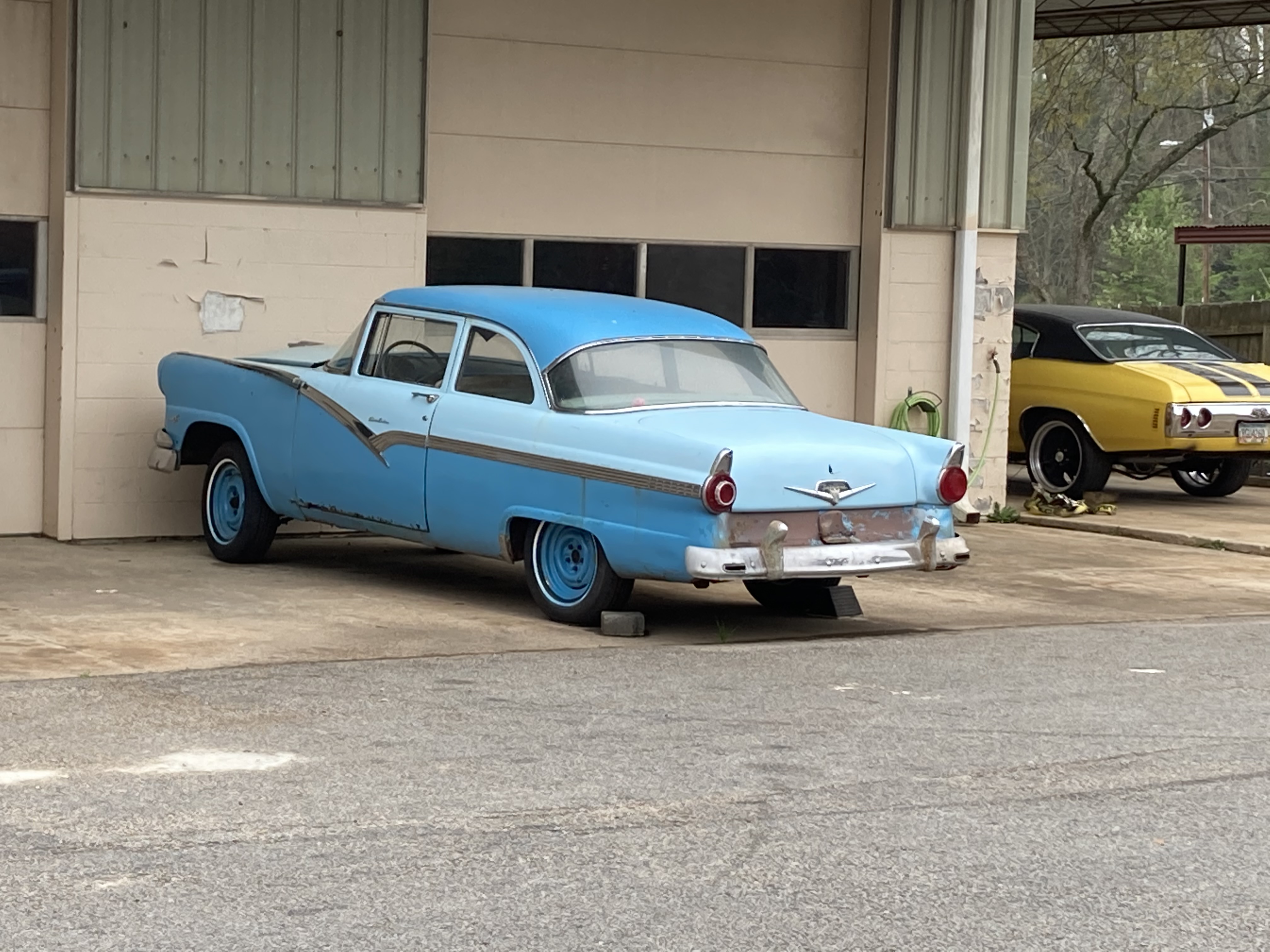
11. **1956 Ford Club Sedan**Transitioning from commissioned masterpieces to the vehicles that grace his personal collection, Chip Foose’s 1956 Ford Club Sedan stands as a quintessential embodiment of his signature style. This car is not just a classic; it is a meticulously transformed icon, reflecting Foose’s profound creativity and his unwavering attention to detail in automotive craftsmanship. It serves as a brilliant example of how he can take a beloved vintage automobile and imbue it with contemporary flair while preserving its intrinsic, nostalgic charm.
Foose’s work on the Club Sedan showcases his mastery of subtle refinement. The car maintains its original, distinctive vintage character, but with a sleek, refreshed exterior that boasts updated lines and a flawless, gleaming paint job. Often, Foose opts for subtle hues that are carefully chosen to accentuate the car’s existing contours, highlighting its inherent beauty rather than overwhelming it with ostentation. The result is a vehicle that feels both historically significant and utterly fresh, a true showstopper at any automotive event.
Beneath its elegant facade, the Club Sedan typically features a powerful, modern engine, a hallmark of Foose’s approach to integrating updated technology. This ensures both reliability and impressive performance, marrying the best of classic aesthetics with contemporary mechanical prowess. The interior receives equally meticulous attention, personalized with luxurious materials and state-of-the-art amenities that elevate the driving experience to a level of modern comfort and sophistication, all while maintaining a respectful nod to the car’s heritage.
Ultimately, Foose’s 1956 Ford Club Sedan is a powerful testament to his ability to honor the past while seamlessly infusing it with a modern sensibility. It exemplifies his philosophy of enhancing, rather than altering, the essence of a classic, making it a highly coveted piece for automotive enthusiasts and a proud representation of his personal taste and design philosophy. With an estimated value ranging from $30,000 to $60,000, it’s a prized possession that speaks volumes about his discerning eye.
Car Model Information: 2023 Chevrolet Silverado 1500 ZR2
Name: Ford Country Sedan
Caption: 1956 Ford Eight-Passenger Country Sedan
Aka: Meteor (automobile)
Manufacturer: Ford Motor Company
Assembly: Main plant,Dearborn, MI,Branch Assembly,Twin Cities, MN,Somerville, MA,Richmond, CA,Norfolk, VA,Memphis, TN,Louisville, KY,Long Beach, CA,Kansas City, MO,Edgewater, NJ,Dallas, TX,Chicago, IL,Chester, PA,Buffalo, NY,Atlanta, GA
Class: Full-size,station wagon
BodyStyle: station wagon
ModelYears: 1952–1974
Related: Ford Ranch Wagon,Ford Country Squire,Ford Ranchero,Ford Del Rio,Mercury Commuter
Categories: 1940s cars, 1950s cars, 1960s cars, 1970s cars, Articles with short description
Summary: The Ford Country Sedan is a full-size station wagon that was built by Ford in the United States from 1952 until 1974. It was part of the U.S. Ford full-size car line available in each year.
The Country Sedan was the mid-trim station wagon in the U.S. Ford range. Unlike the Country Squire, the Country Sedan featured plain body sides. As a full-size wagon, it could carry up to 9 passengers, if so equipped. For every year it was sold, regardless of the model line it was aligned with, the Country Sedan outsold the more exclusive Country Squire due to the more modest standard and optional equipment included while using the same powertrain as the more expensive version.
The Country Sedan was part of the Ford Customline range from 1952 to 1954. Beginning in 1955, Ford moved their station wagons into their own series and the Country Sedan continued to represent the mid-trim level station wagon. During the 1960s and 1970s, the Country Sedan was approximate to the Galaxie and later the Galaxie 500 in trim elements. For 1972, 1973 and 1974 the model was marketed as the Galaxie 500 Country Sedan and from 1975 it was rebranded LTD wagon. By this time the trim level was identical to the Country Squire apart from the absence of simulated wood exterior paneling.
Get more information about: Ford Country Sedan
Buying a high-performing used car >>>
Brand: Ford Model: Club Sedan
Price: $55,987 Mileage: 16,987 mi.
Read more about: Timeless Engineering, Iconic Style: Unpacking the Most Significant Cars of the 1940s
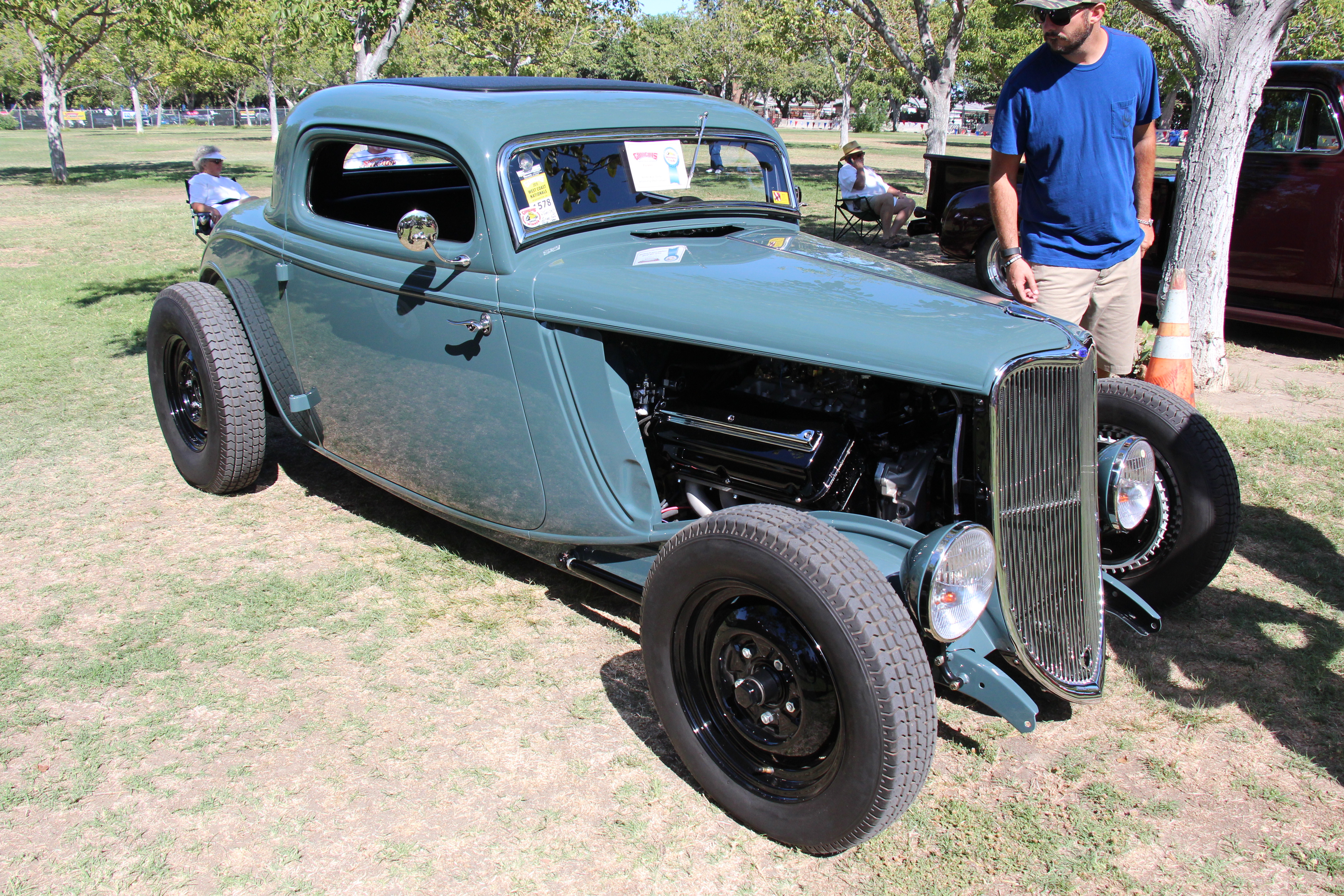
12. **1934 Ford 3-Window Coupe**Another crown jewel in Chip Foose’s esteemed personal collection is his 1934 Ford 3-Window Coupe, a stunning example of bespoke automotive artistry. This vehicle is a powerful illustration of the legendary designer’s unparalleled skill in transforming classic cars into modern masterpieces, all while meticulously preserving their original, cherished charm. It’s a hot rod celebrated not just for its performance, but for its sleek aesthetics and the precise execution of its design.
The Coupe is instantly recognizable for its aggressive, lowered stance and the exquisitely crafted body lines that dramatically enhance its vintage appeal. Foose has achieved a remarkable balance, seamlessly fusing traditional hot rod elements—like its iconic chopped top and muscular profile—with a suite of contemporary upgrades. This includes a powerful, custom-engineered engine that promises exhilarating speed and robust reliability, bringing modern performance to a classic silhouette without compromising its historical integrity.
The interior of the 1934 Ford 3-Window Coupe is an equally impressive display of Foose’s design acumen. It features luxurious materials, carefully selected for their texture and durability, alongside a refined design that respectfully pays homage to the coupe’s rich heritage. Yet, it also ensures modern comfort and functionality, creating an environment that is both aesthetically pleasing and thoroughly enjoyable to inhabit. Every detail, from the instrumentation to the upholstery, is meticulously curated to provide a cohesive and elevated driving experience.
This 3-Window Coupe stands as a vivid testament to Foose’s visionary approach, reflecting an exceptional balance of past and present automotive design. It is more than just a car; it is a rolling sculpture that beautifully encapsulates the evolution of the hot rod, earning its rightful place as a highly coveted piece in the collector car world. With an estimated value between $70,000 and $120,000, it represents a significant and cherished component of his personal fleet.
Car Model Information: 2023 Chevrolet Silverado 1500 ZR2
Caption: 1932 Ford Model B Standard Tudor 2-door sedan
Name: 1932 Ford Model B
Manufacturer: Ford Motor Company
Production: 1932–1934
Predecessor: Ford Model A (1927–1931)
Successor: Ford Model 48
Class: Full-size Ford
BodyStyle: phaeton body,Pickup truck
Engine: 201 cuin
Abbr: on
Transmission: Non-synchronous transmission,Manual transmission
Wheelbase: 2692 mm
Disp: flip
Layout: FR layout
Assembly: see list below
Related: Ford Model Y,Ford Köln,Ford Rheinland,GAZ-M1
Designer: Edsel Ford
Categories: 1930s cars, All articles needing additional references, All articles with unsourced statements, Articles needing additional references from January 2021, Articles with short description
Summary: The term 1932 Ford may refer to three models of automobile produced by Ford Motors between 1932 and 1934: the Model B, the Model 18, and the Model 40. These succeeded the Model A. The Model B had an updated four-cylinder engine and was available from 1932 to 1934. The Model 18 was the first Ford fitted with the flathead V-8, and it was available in the Model 40 too in 1933 and 1934. The company also replaced the Model AA truck with the Model BB, available with either the four- or eight-cylinder engine.
The three car models were replaced by the streamlined Model 48 in 1935.
Get more information about: 1932 Ford
Buying a high-performing used car >>>
Brand: Ford Model: 3-Window Coupe
Price: $55,987 Mileage: 16,987 mi.
Read more about: Behind the Melodies and Magnificence: An Enthusiastic Look at Brian Wilson’s Legendary Car Collection and His Unforgettable Automotive Legacy

13. **1932 Ford Highboy Roadster**The 1932 Ford Highboy Roadster in Chip Foose’s collection is a masterful convergence of classic automotive design and contemporary craftsmanship, epitomizing the very essence of hot rod culture. This iconic roadster, famous for its quintessential low-slung and streamlined body style, is elevated by Foose’s innovative touches, transforming it into a definitive modern masterpiece while steadfastly retaining its nostalgic appeal. It’s a vehicle that communicates both reverence for history and a bold stride into modern performance.
Foose’s meticulous attention to detail is evident in every facet of the Highboy Roadster. The custom fabrication is impeccable, showcasing seamless bodywork and a flawless paint finish that elevates the vehicle’s aesthetics to an art form. Every curve and panel has been finessed to perfection, enhancing the car’s inherent beauty without detracting from its original charm. It’s a testament to his ability to refine and modernize without losing the soul of the classic design.
Under the hood, Foose typically integrates powerful, high-performance engines, ensuring that the car not only looks exceptional but also performs with exhilarating capability. This approach bridges the gap between vintage design and contemporary engineering, offering a driving experience that is both authentic and thrilling. The interior, equally thoughtfully appointed, combines luxurious materials with classic styling cues, providing both comfort and an immersive, authentic driving experience that transports occupants back to a golden age of motoring, albeit with modern reliability.
Chip Foose’s 1932 Ford Highboy Roadster is far more than just a vehicle; it is a rolling piece of art that captures the imagination and commands the respect of car enthusiasts worldwide. It perfectly encapsulates his design philosophy: respecting automotive heritage while pushing the boundaries of what a custom hot rod can be. With an estimated value ranging from $80,000 to $150,000, it stands as a shining example of a truly iconic custom build, cherished within his personal garage.
Car Model Information: 2023 Chevrolet Silverado 1500 ZR2
Name: Sixth generation
Production: 1972–1979 (USA),1973–1979 (Mexico and Venezuela),1974–1980 (Argentina, F-100, F-250, F-600 and F-700),1974–1981 (Argentina, F-350),1973–1979 (Australia)
Manufacturer: Ford Motor Company
Class: Pickup truck
Layout: Front-engine, rear-wheel-drive layout,rear-wheel drive
BodyStyle: 2-door regular cab , 2-door extended cab , 4-door crew cab
Assembly: General Pacheco,Argentina
Engine: Ford straight-six engine#Third generation,Straight-six engine
Predecessor: Ford F-Series (fifth generation)
Successor: Ford F-Series (seventh generation)
Related: Ford Bronco#1978–1979,Ford F-series (medium duty truck)
ModelYears: 1973–1979
Caption: 1974 F-100
Categories: All-wheel-drive vehicles, All articles needing additional references, All articles with unsourced statements, Articles needing additional references from April 2021, Articles needing additional references from March 2014
Summary: The sixth generation of the Ford F-Series, also known as the “dentside Ford” to enthusiasts, is a line of pickup trucks and medium-duty commercial trucks that were produced by Ford Motor Company from the 1973 to 1979 model years. Produced by Ford in North America, Argentina, and Australia, this is the third and final generation of trucks derived from the 1965 Ford F-Series.
The sixth generation marked several functional design changes and an expansion of the model line. For 1973, the regular cab F-350 became available with a wide “Styleside” bed for the first time. For 1974, a “SuperCab” extended cab pickup truck was introduced, between the two-door standard cab and the four-door crew cab. For 1975, the F-150 was introduced; a higher-payload version of the F-100 (intended to circumvent emissions standards), the F-150 would become the most popular version of the model line (ultimately replacing the F-100). A second generation of the Ford Bronco SUV was released for 1978 (after several years of delays) on a shortened F-100 chassis.
In 1977, the model line surpassed the Chevrolet C/K to become the best-selling truck in the United States, a position it has held ever since.
Get more information about: Ford F-Series (sixth generation)
Buying a high-performing used car >>>
Brand: Ford Model: Highboy Roadster
Price: $55,987 Mileage: 16,987 mi.
Read more about: From Model T to Rolls-Royce: 18 Cars That Made the 1920s Roar

14. **1932 Ford Model 18 5-Window Coupe**Another distinguished entry in Chip Foose’s celebrated car collection is the 1932 Ford Model 18 5-Window Coupe, an exceptional example of automotive artistry where classic design harmoniously merges with modern enhancements. Foose, renowned globally for his innovative designs and meticulous attention to detail, has taken this iconic American car and elevated it into a true masterpiece, making it a beacon for hot rodding enthusiasts.
The Model 18 originally made its historic debut with the groundbreaking V8 engine, an innovation that fundamentally laid the groundwork for the burgeoning hot rodding culture. Foose’s personal version of this legendary vehicle brilliantly maintains the pioneering spirit of the original, but introduces a series of custom touches that enhance its visual appeal and driving dynamics. These modifications include a sleek, precisely lowered stance that gives the car an aggressive yet elegant posture, complemented by his signature paintwork which flawlessly highlights its vintage lines.
The seamless blend of traditional elements with contemporary influences is strikingly evident in the car’s impeccable execution. From its meticulously crafted interior, which combines nostalgic charm with modern comfort, to the significant performance upgrades discreetly integrated under the hood, every aspect ensures that the car drives with the same beauty and precision that it displays aesthetically. It’s a testament to Foose’s holistic design approach, where form and function are in perfect synergy.
Foose’s work on the 1932 Ford Coupe stands as a powerful exemplar of his enduring ability to honor automotive history while simultaneously pushing the boundaries of car design innovation. It’s a vehicle that embodies the very soul of hot rodding, refined and reimagined through the eyes of a master. With an estimated value between $40,000 and $90,000, this 5-Window Coupe is a treasured part of his collection, reflecting a piece of his personal automotive journey.
Car Model Information: 2023 Chevrolet Silverado 1500 ZR2
Caption: 1932 Ford Model B Standard Tudor 2-door sedan
Name: 1932 Ford Model B
Manufacturer: Ford Motor Company
Production: 1932–1934
Predecessor: Ford Model A (1927–1931)
Successor: Ford Model 48
Class: Full-size Ford
BodyStyle: phaeton body,Pickup truck
Engine: 201 cuin
Abbr: on
Transmission: Non-synchronous transmission,Manual transmission
Wheelbase: 2692 mm
Disp: flip
Layout: FR layout
Assembly: see list below
Related: Ford Model Y,Ford Köln,Ford Rheinland,GAZ-M1
Designer: Edsel Ford
Categories: 1930s cars, All articles needing additional references, All articles with unsourced statements, Articles needing additional references from January 2021, Articles with short description
Summary: The term 1932 Ford may refer to three models of automobile produced by Ford Motors between 1932 and 1934: the Model B, the Model 18, and the Model 40. These succeeded the Model A. The Model B had an updated four-cylinder engine and was available from 1932 to 1934. The Model 18 was the first Ford fitted with the flathead V-8, and it was available in the Model 40 too in 1933 and 1934. The company also replaced the Model AA truck with the Model BB, available with either the four- or eight-cylinder engine.
The three car models were replaced by the streamlined Model 48 in 1935.
Get more information about: 1932 Ford
Buying a high-performing used car >>>
Brand: Ford Model: Model 18 5-Window Coupe
Price: $55,987 Mileage: 16,987 mi.
Read more about: Richard Rawlings Reboots: Unpacking the Automotive Icon’s Past, Present, and Future as He Clears the Decks

15. **1932 Ford Model 18 Deluxe Roadster**Completing our journey through Chip Foose’s evolving excellence and personal automotive passions is his 1932 Ford Model 18 Deluxe Roadster, a masterful reinterpretation of a quintessential American automobile. This vehicle stands as a testament to Foose’s unparalleled expertise in automotive design and customization, showcasing his keen eye and innovative approach to breathing new life into timeless classics while respectfully preserving their storied past. It’s a perfect blend of heritage and forward-thinking design.
The Deluxe Roadster in Foose’s collection embodies a seamless fusion of vintage charm and modern elegance. Its exterior is a symphony of refined lines and enhanced aerodynamics, all meticulously crafted to perfection. A subtle yet striking color palette, characteristic of Foose’s distinctive style, further accentuates the car’s natural beauty, making it an understated yet utterly captivating presence. Every detail contributes to an aesthetic that is both classic and undeniably contemporary.
Under the sculpted hood, this reimagined masterpiece houses a powerful modern engine. This choice aligns with contemporary performance standards, ensuring exhilarating power and reliability, while still respecting the vehicle’s historical roots and the spirit of the original Model 18. The interior boasts superior craftsmanship, with luxurious materials and state-of-the-art technology effortlessly integrated into the classic layout. This ensures a driving experience that is not only comfortable and refined but also exhilarating and thoroughly modern.
This 1932 Ford Model 18 Deluxe Roadster is much more than a mere tribute to automotive history; it is a profound testament to Foose’s artistry and his remarkable ability to invigorate timeless classics with a vibrant new lease on life. It represents the pinnacle of his personal collection, encapsulating his philosophy of enduring design and performance. Valued between $70,000 and $130,000, it is a truly iconic piece, a reflection of the man who has shaped the very definition of custom cars.
Car Model Information: 2023 Chevrolet Silverado 1500 ZR2
Caption: 1932 Ford Model B Standard Tudor 2-door sedan
Name: 1932 Ford Model B
Manufacturer: Ford Motor Company
Production: 1932–1934
Predecessor: Ford Model A (1927–1931)
Successor: Ford Model 48
Class: Full-size Ford
BodyStyle: phaeton body,Pickup truck
Engine: 201 cuin
Abbr: on
Transmission: Non-synchronous transmission,Manual transmission
Wheelbase: 2692 mm
Disp: flip
Layout: FR layout
Assembly: see list below
Related: Ford Model Y,Ford Köln,Ford Rheinland,GAZ-M1
Designer: Edsel Ford
Categories: 1930s cars, All articles needing additional references, All articles with unsourced statements, Articles needing additional references from January 2021, Articles with short description
Summary: The term 1932 Ford may refer to three models of automobile produced by Ford Motors between 1932 and 1934: the Model B, the Model 18, and the Model 40. These succeeded the Model A. The Model B had an updated four-cylinder engine and was available from 1932 to 1934. The Model 18 was the first Ford fitted with the flathead V-8, and it was available in the Model 40 too in 1933 and 1934. The company also replaced the Model AA truck with the Model BB, available with either the four- or eight-cylinder engine.
The three car models were replaced by the streamlined Model 48 in 1935.
Get more information about: 1932 Ford
Buying a high-performing used car >>>
Brand: Ford Model: Model 18
Price: $55,987 Mileage: 16,987 mi.
Read more about: Gearhead Dreams: 15 Iconic Defunct Car Brands We Desperately Want Back on the Road
In closing, Chip Foose’s journey from a young boy sketching cars to becoming an undisputed titan in custom automotive design is nothing short of legendary. His work, whether on groundbreaking show cars or the cherished vehicles in his personal garage, consistently demonstrates a profound respect for automotive heritage coupled with an unyielding drive for innovation. Foose doesn’t just build cars; he elevates them to rolling works of art, pieces that captivate, inspire, and endure. His creations are not merely metal, paint, and horsepower; they are testaments to passion, precision, and an artistry that continues to shape the very landscape of car culture, ensuring his reign as the king of custom cars remains unchallenged for generations to come. The legacy of Chip Foose is not just about what he drives daily, but about the dreams he has driven into reality for countless enthusiasts worldwide.

